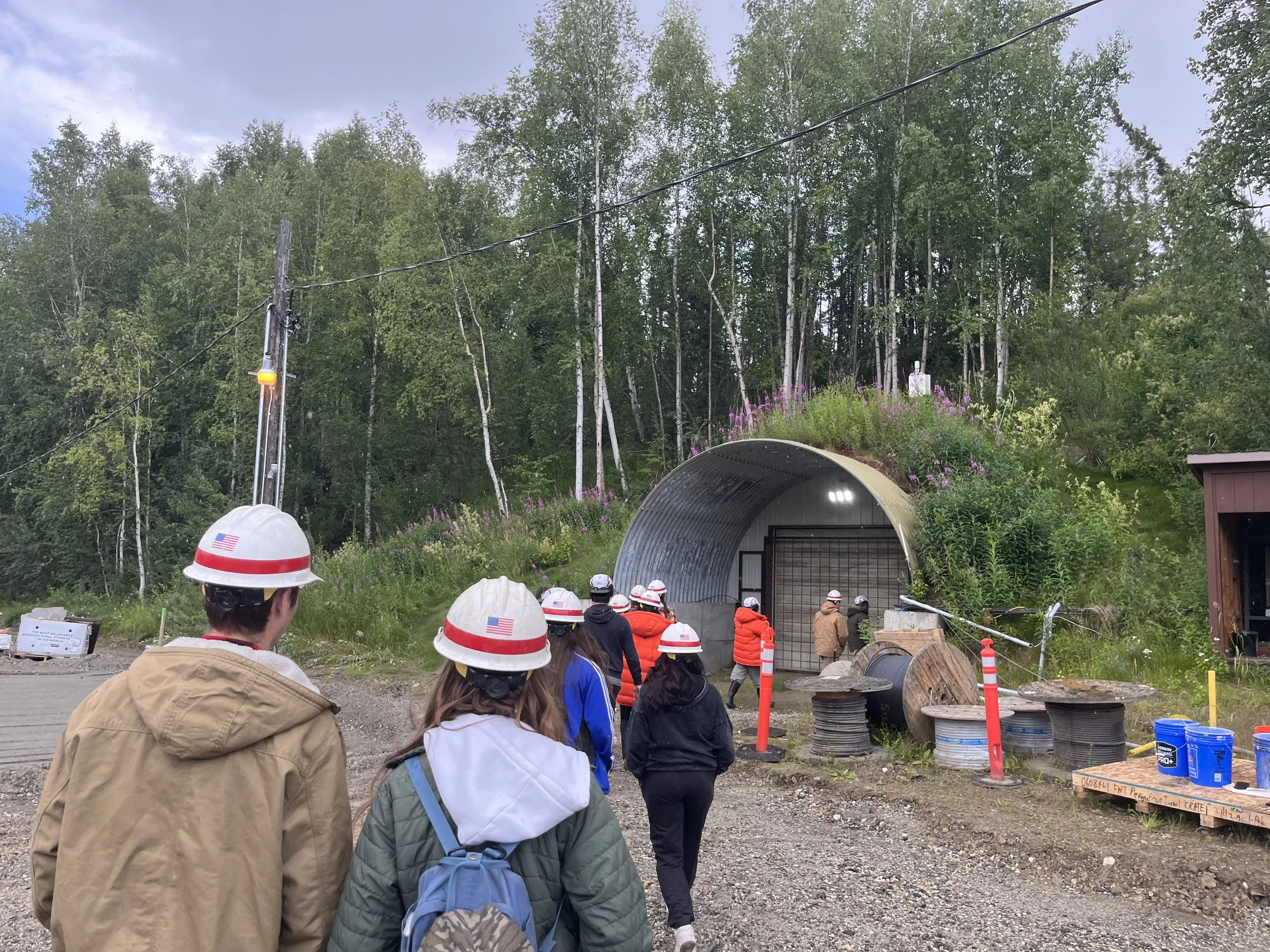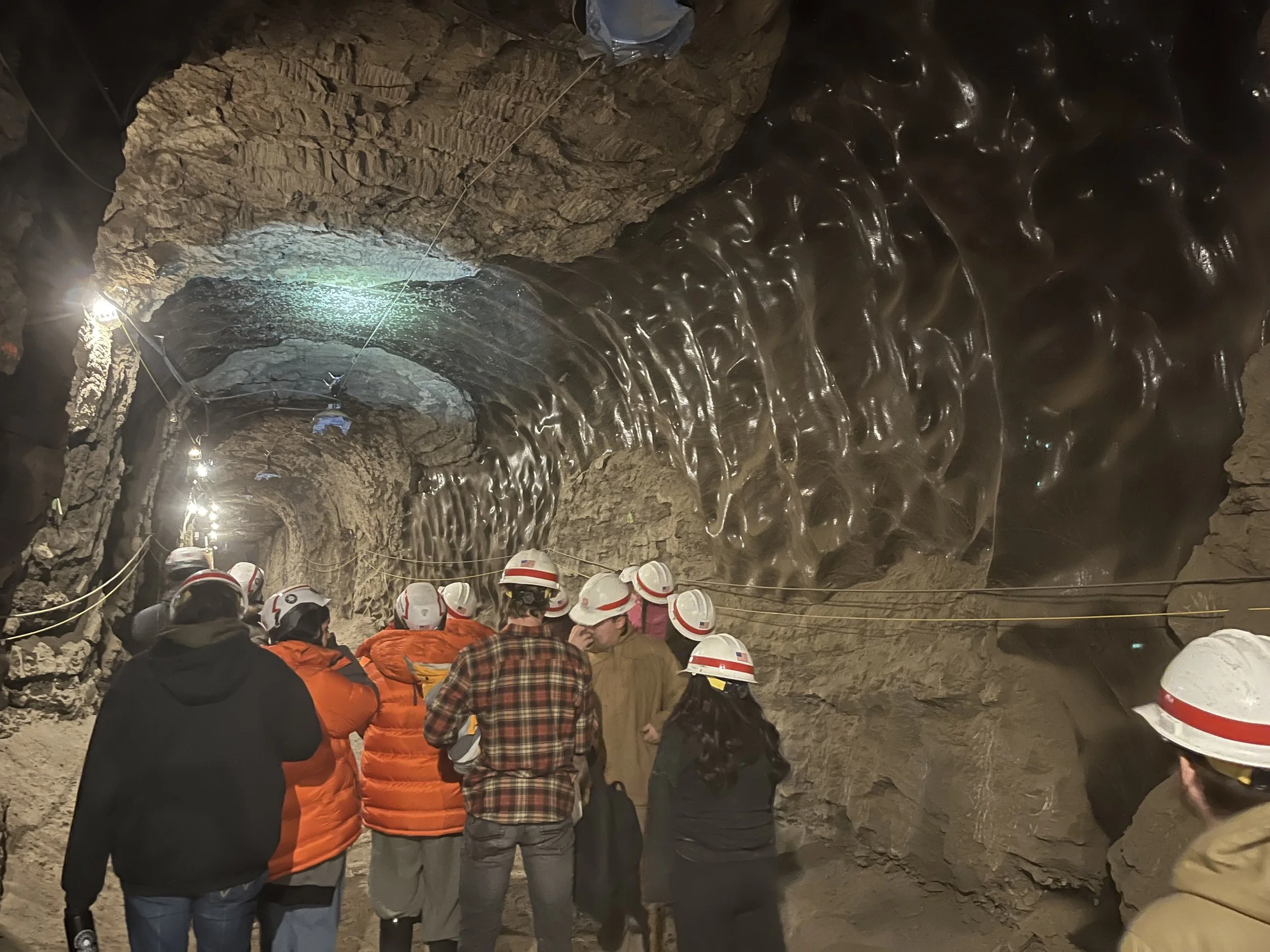A Tunnel of Underground Ice
YETI and Tazlina Youth Program participants about to enter the CRREL Permafrost Tunnel Research Facility. Photo by Colleen Merrick.
August 21, 2025
Annushka Tubbs – CRNA YETI
On Friday, July 25, the Copper River Native Association’s Tribal Community Services Department—Youth Employment Training Initiative (YETI)—took a trip up to Fairbanks, Alaska, to visit the Permafrost Tunnel Research Facility. Along with the Tazlina Youth Program, they toured the tunnel, hosted by the Cold Regions Research and Engineering Laboratory (CRREL).
Walking into the tunnel was, for sure… an experience. The air smelled of methane and chemicals—likely from decomposing animals frozen into the walls. It was dark, and the walls were lined with cracks of ice expanding into wedges. Strings of lights ran along the sides, and old equipment from past years stuck out of the ceiling. It was about the temperature of a refrigerator, and the floor was covered in a thick layer of silt—so much that I could feel it against my teeth.
Tazlina youth, YETI youth, Native Village of Tazlina staff, and CRNA staff at the CRREL Permafrost Research Facility with Dr. Alexander Khodolov (kneeling in front.) Photo by Colleen Merrick.
The tunnel itself is a loop, about sixty to seventy meters underground. Our guide, Dr. Alexander Kholodov—a professor at the University of Alaska Fairbanks—led us through it and taught us as we walked. At the entrance, there were bison bones being carefully unearthed. In one of the deepest parts, we saw a thick gravel layer dating back a million years. And in the very bottom of the tunnel? Bedrock that’s around 570 million years old.
The tunnel was originally built during World War II as a potential bomb shelter in case of nuclear war. While it’s not used for that now, it was once an active gold mine and is currently used to research permafrost. It was owned by the military until they abandoned it—after which CRREL stepped in and has maintained it ever since. Throughout the tunnel, there are five-foot-deep holes in the ice, drilled to measure its age and other data.
This tunnel is particularly old. It’s located beneath a black spruce forest, which naturally insulates the ice. Before climate change became a concern, the tunnel stayed frozen year-round. But since 2018, due to global warming, CRREL has had to install huge fans to blow cold winter air into the tunnel. From May to October, they basically turn it into a giant refrigerator to pull heat out, instead of just pushing cold in.
YETI and Tazlina Youth Program participants in the CRREL Permafrost Tunnel Research Facility. Photo by Colleen Merrick.
I don’t think most people think about permafrost enough. Like—it’s just frozen ground, right? Why should we care? But the truth is, it affects us every day. Each year, the permafrost shifts, and the roads develop dips and hills. Every year, construction crews have to repair the damage—and that construction affects people’s homes, jobs, and even grocery access.
My personal favorite part of the trip was learning the age of the tunnel. At its lowest point, the bedrock is more than twice the age of the dinosaurs. And up higher, you can find bones and tusks of mammoths! I think it’s amazing to witness something that old with your own eyes.
Speaking of this amazing trip—thank you to the Cold Regions Research and Engineering Laboratory for hosting us! Thank you to Dr. Alexander Kholodov and Jenna Williams for sharing your knowledge and leading our group. We’re all incredibly grateful for this unforgettable, possibly once-in-a-lifetime experience—and I can say for sure, we won’t be forgetting it anytime soon!
The Youth Employment and Training Initiative (YETI) program is run by the Copper River Native Association (CRNA). Participants are Copper Basin youth ages 15-19 who are employed for the summer to work with various regional organizations and agencies. Youth aged 14-25 are eligible to participate. YETIs are learning career skills, gaining mentors, and helping their communities. Tsin’aen, YETIs!



